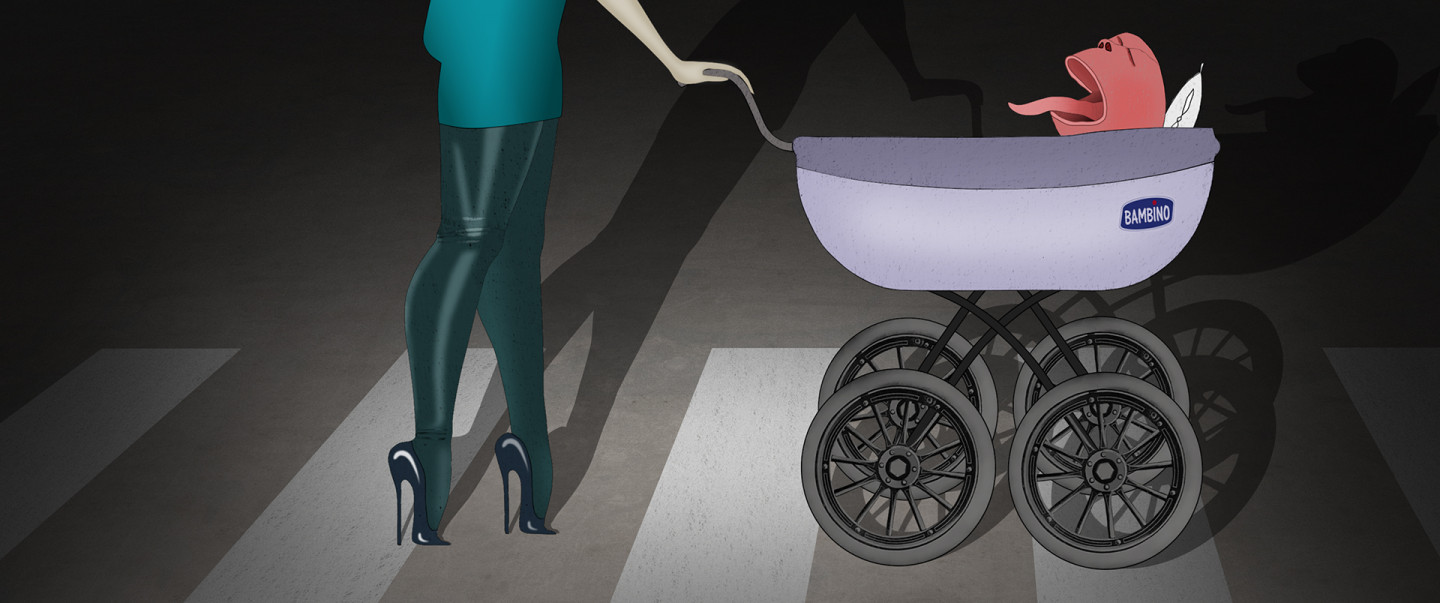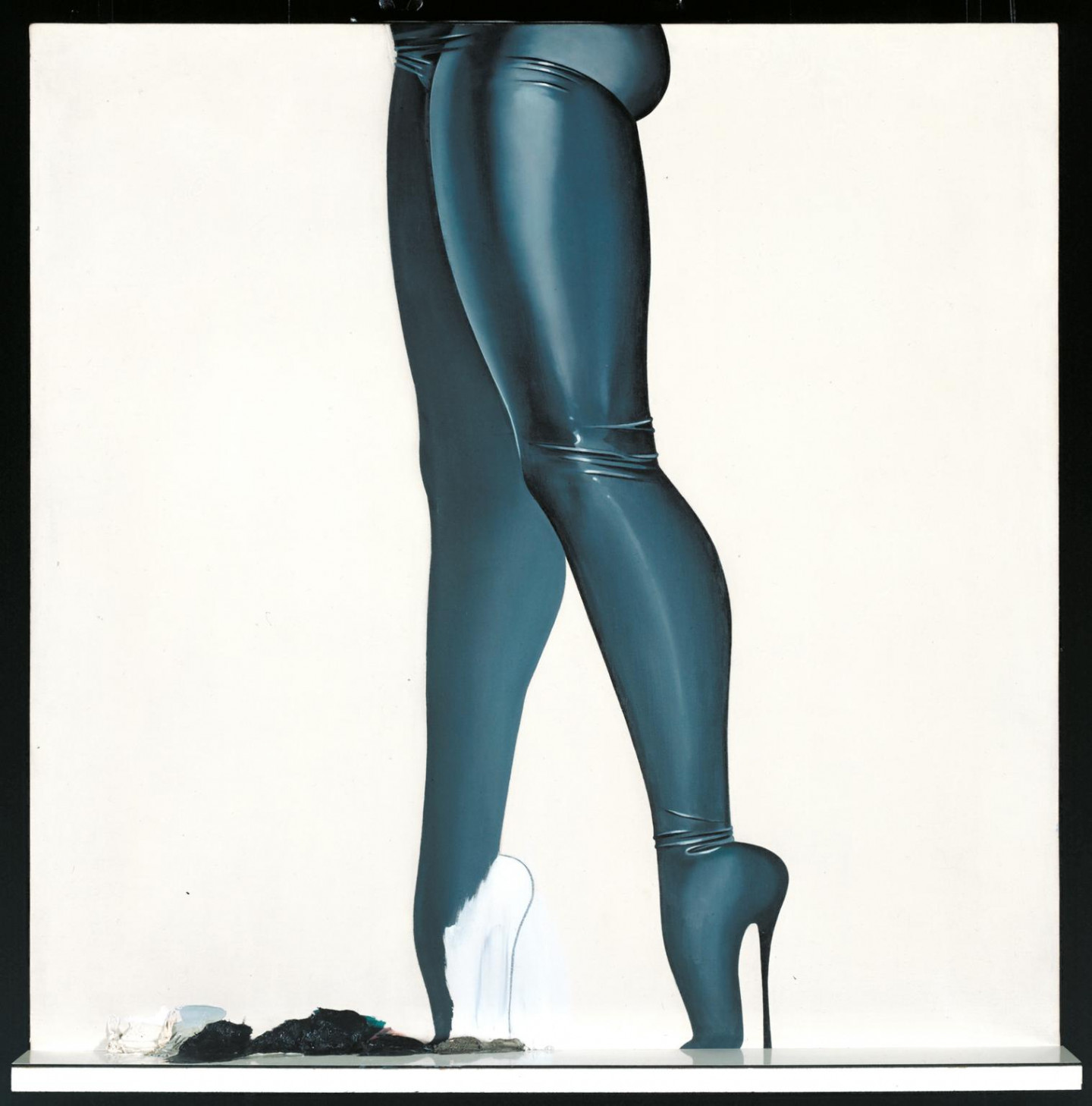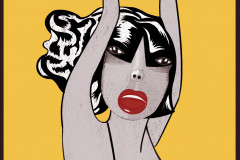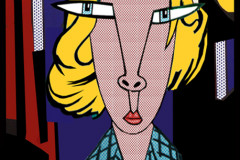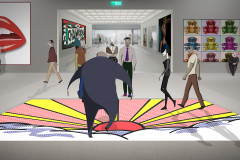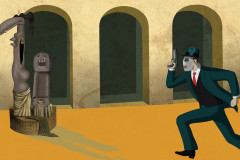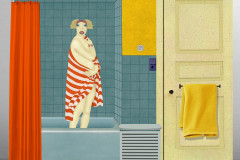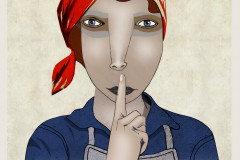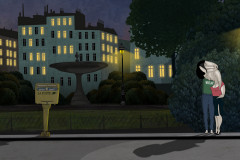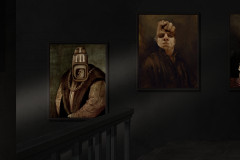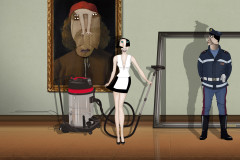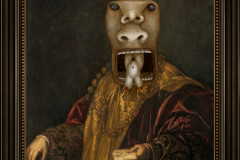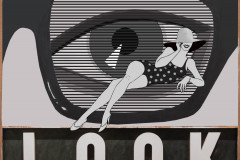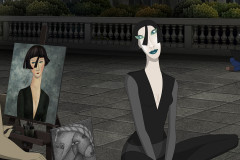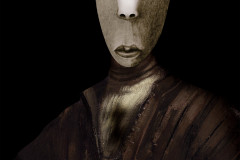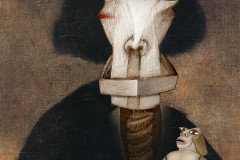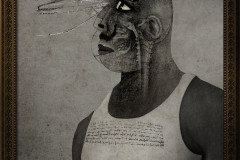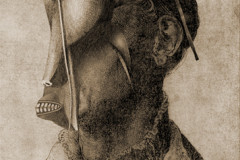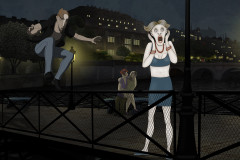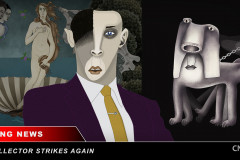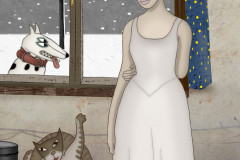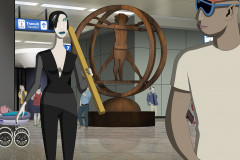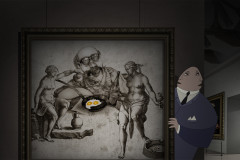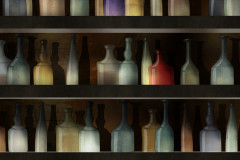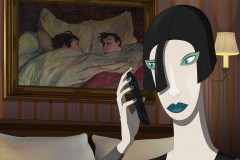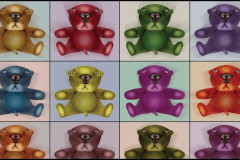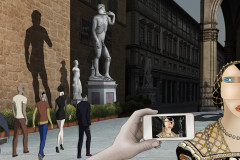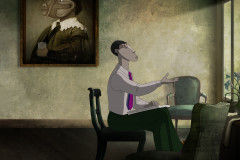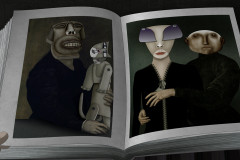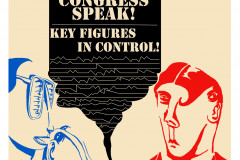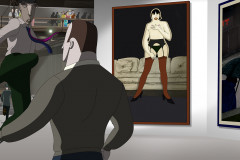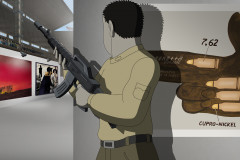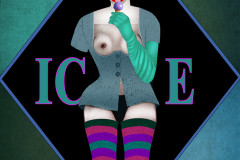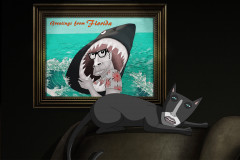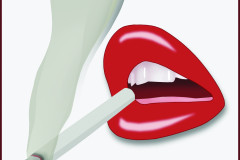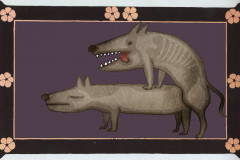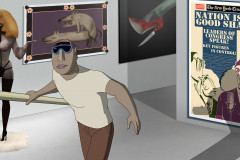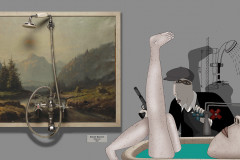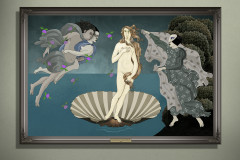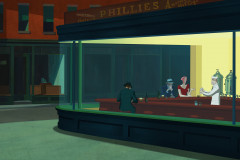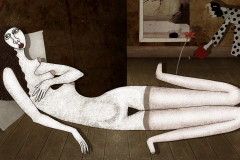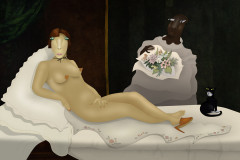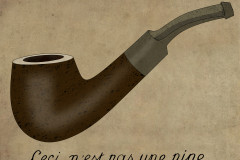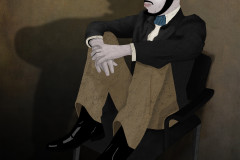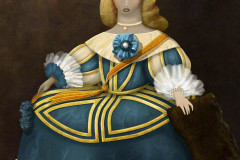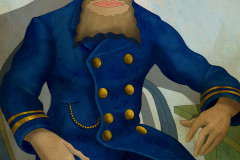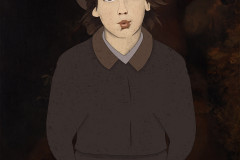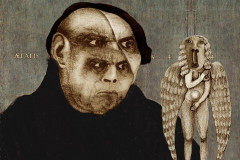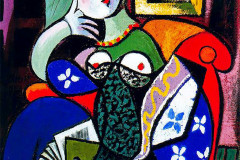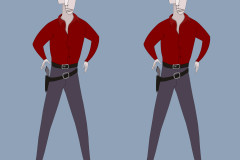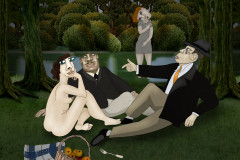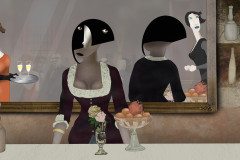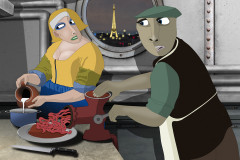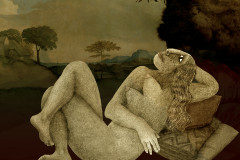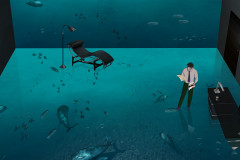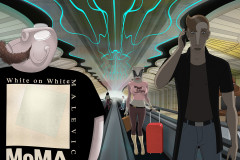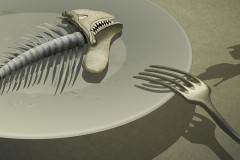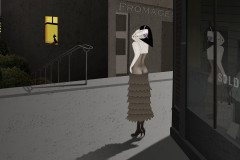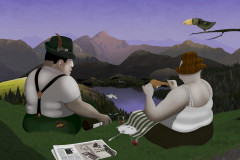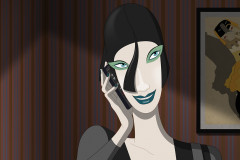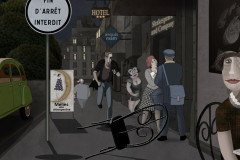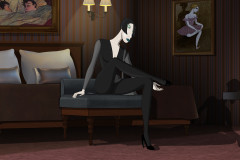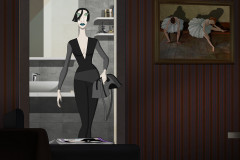Jones, Allen (1937-): Wet Seal, 1966 (olaj, vászon, fa és melamin, 93,4 x 91,5 x 10 cm), London, Tate Gallery. Az angol pop-art egyik első alkotójának számos alkotásán találkozunk a „női lábak” motívumával. A Ruben Brandtban is több helyen feltűnnek a mű átiratai – például az első üldözéses jelenetben a párizsi zebrán babakocsit sétáltatva áttipegő nő alakjában vagy a maffiavezér, Vincenzo Delangello asztalán lévő lámpa lábaiban.
A pop-art művek szinte mindig zavarbaejtőek. Ennek a festménynek már maga a képkivágása is erotikus töltetű, hiszen egy nőnek csak az alsótestét látjuk, szűk latexnadrágban, extrém magassarkú cipőben. Allen Jones amerikai tartózkodása alatt egy katalógusáruház cipőkínálatának oldalain látott fotókat használt fel 5 darabos képsorozatának megalkotásához, a festmények címei pedig az adott cipőmodell nevéből születtek. Ismerős gesztus ez az amerikai pop-artból, amelynek művészei szintén rendszeresen inspirálódtak reklámfotókból. Jones életnagyságúra nagyítja a női lábakat. A bal lábat szinte hiperrealisztikus valószerűséggel festi meg, míg a jobb láb inkább csak árnyékszerűen jelenik meg, a lábfejnél-cipőnél már szándékolt befejezetlenséggel – ez az újabb zavart keltő gesztus: hirtelen megtörik a másik láb festésmódja által keltett illúziónk. Jones, aki szobrokat, háromdimenziós alkotásokat is létrehozott, ezen a képén kísérletezett először a festményhez illesztett kis műanyag polccal, amely szándékai szerint a realisztikusan megfestett bal láb térbeliségét kívánja hangsúlyozni – mintha a kis párkányon egyensúlyoznának a nő léptei. A jobb lábnál azonban nagyon is gyakorlatias funkciója van a polcocskának: a láb befejezéséhez szükséges festék van felhalmozva rajta, közszemlére téve, miből is jön létre a képi illúzió.
Jones, Allen (1937–): Wet Seal, 1966 (oil, canvas, wood, and melamine, 93.4 x 91.5 x 10 cm), Tate Gallery, London. One of the early figures of British pop art, Allen Jones frequently used the motif of “female legs” in his works. In Ruben Brandt, Collector, several reinterpretations of this piece appear—for instance, in the woman tiptoeing across a Parisian crosswalk with a stroller during the first chase scene, or in the legs of the lamp on mafia boss Vincenzo Delangello’s desk.
Pop art works are almost always provocative. This painting’s framing alone carries an erotic charge: we see only the lower half of a woman’s body, clad in tight latex pants and extreme high heels. While in the U.S., Jones drew inspiration from catalog images of footwear, particularly from the pages of a shoe section in a department store catalogue. He created a five-part painting series, with each title based on the shoe model depicted. This method—borrowing from advertising imagery—is a familiar gesture in American pop art as well. Jones enlarges the female legs to life-size. The left leg is rendered in nearly hyperrealistic detail, while the right leg appears more like a shadow, intentionally left unfinished at the foot and shoe—another disorienting gesture that breaks the illusion created by the painting style of the other leg.
Jones, who also created sculptures and three-dimensional works, experimented here for the first time with attaching a small plastic shelf to the painting. This shelf is meant to emphasize the spatial presence of the realistically painted left leg—as if the woman’s steps are balancing on this ledge. The shelf under the right leg, however, serves a more practical purpose: it holds the very paint used to “complete” the leg, openly displaying the raw material behind the illusion.






